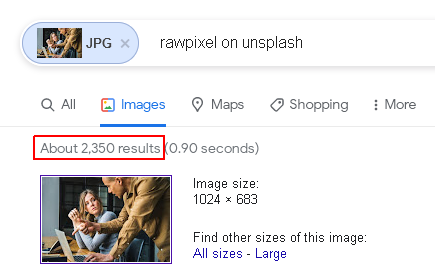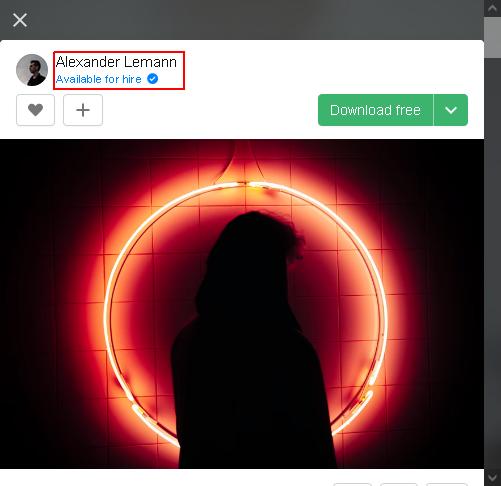SEO 2 Best Practices: Finding Images/Choosing Free Photos

Back when I just started the SEO 2 blog I used images only as a nice to have addition. Why?
I wrote and published a lot while there weren’t many free (to use) photos back then.
Nowadays you always need to add teaser images to blog posts to get noticed.
Luckily It has become much easier in recent years. There is plenty of choice now.
Yet at the same time is has become more difficult to choose free photos! How that?
Why Add Free to Use Photos to Your Blog Posts?
First of all: why should you use images to your blog posts? You get more eyeballs of course.
Why add photos even when you deal with boring topics that have no visual representation?
Some topics like SEO rarely yield any significant imagery beyond screen shots.
Let me explain the benefits of catchy images. An image
- catches attention
- stirs curiosity
- illustrates a topic
- makes you relate to the subject
- helps you to memorize
- looks good and thus makes an overall positive impression
- is great for being found at Google image search
It’s easy to find images by now! Truly free stock photos you can freely use about!
What does “free to use” mean? You can put them on your blog without having to pay.
Free to Use Image Resources
In case you didn’t know yet: There are many stock photography and free image search engines!
Yet I won’t offer you an overwhelmingly large list of sites to find stock images on.
I will recommend just 4 image search engines I use to find free to use photography:
I seldom use more than one of these 4! I often just use Unsplash and that’s it!
Woohoo! Yes, it’s as easy to find high quality free to use images!
You can illustrate your point with a few clicks using one of these sites.
In most cases I already find the perfect image on Unsplash.
And it’s not just me! Adding images to blog posts is the standard by now.
These days using attractive images on blog posts is a content and social SEO best practice.
Postings without images are the exception and do not perform well usually.
Having an image, a random one does not suffice though by now. It’s tricky. Why?
Finding Images is Easy – Choosing is Difficult
Now that you found some images you may be tempted to use on of the most obvious choices.
Finding images is indeed easy by now but not just for you. Everybody else is also finding the same images.
Thus choosing the right image for your post may prove more difficult than meets the eye at first.
It’s not just about image popularity. There are a few pitfalls that make your post underperform.
- stock photography cliches
- images everybody else already used
- photos showing particular groups
Ouch. How do you avoid those? It depends of course. See below and find out about each issue.
Use Photos of Real People with Flaws

There are many so called stock photography clichés. You certainly recognize those intuitively by now and ignore such images as fake.
What are the common cliches and stereotypes?
Perfect looking people smiling around computers or during meetings in otherwise bland office spaces without any context.
Such photos were obviously made to fit lots of websites but the people on them look so out of place that you are effectively lying to your audience.
Instead use photos of people who look real. They may have some small flaws or other atypical characteristics:
- men with long or facial hair or both
- women who do not have ideal slim bodies
- kids that are not perfectly clean.
Unless you look like a zombie with fresh wounds on your face – I really did – you can use your won photos by the way!
Use Rather Unique Photos
Do not use photos that have downloaded millions of times. Unsplash shows statistics below each image.
You can also perform a search by image on Google or reverse image search on Tineye.
This helps you to find out how often it got used already before choosing an image.

People tend to ignore images they have seen too often. Unless the familiarity is something they expected and cherish.
Familiarity mostly applies to images they are used to, like photos of people they know or places they love.
Thus you should try to use rather unique photos.
As a big brand: hire a photographer! You can contact photographers directly on Unsplash now:

For everybody else: scroll at least a bit and do not select the obvious choice you find on top for one word searches!
Of course there is middle ground between hiring a photographer and choosing a free photo. You can pay for a stock photo.
Many sites sell stock photography and some of it is affordable.
I would not buy it for a blog post but when you illustrate a business website you’d rather want a photo not everybody else uses, maybe just a few sites.
Or at least check out the Unsplash homepage and look what new photos have just been published. Sometimes they match your topic!
Don’t Use People Photography to Illustrate Touchy Topics
OK, now that you have used real people and images not everybody else used you have to look out who you use to illustrate what.
- Do you really want to use an image of a person of color when writing about violent street crime?
- Do you really want to use a photo of a woman to illustrate a story about household chores?
- Do you really prefer to show a photo of an old white man when dealing with career prospects?
These choices may prove more controversial than you might like, actually backfire and tarnish your reputation.
When choosing photos of people try not to be racist, sexist and otherwise prejudiced. I know. It’s hard.
We’re all subject to decades of subconscious conditioning through passive media consumption.
When dealing with touchy topics you may want to hire an illustrator instead or at least not to use photos of people at all.
It might be better not to use people photography to illustrate touchy topics. Instead use places or metaphors.

Thanks for the photo sites tip..I’ve checked them out and they are really nice..not slow and choppy with load time. Appreciate the hook up. :-)~
Thanks for the links. I don’t use enough images on my blog. Very good points on why to use pictures in posts.
Cheers.
Hey, thanks for the sites. Whenever I search for photos I always stumble upon those that requires payments. Thanks for sharing sites that offer free ones.
Well, you’re welcome of course.
Good insights on using images to make things pop. Another good resource I found is Stock.xchng
http://www.sxc.hu/index.phtml
I remember a post on Problogger that went on many of the same topics as you, but you covered a few good ones that weren’t mentioned.
I hadn’t heard of these. Thanks for spreading the word. Finding photos to illustrate blog posts can take longer than writing the post … so I do like you. If I have time, the post gets an image. I’m hoping these resources will help.
[…] but not least, SEO 2.0 shares three effective places to start looking for free stock photos. I would have really needed such advice about a week and a half ago to be honest. So the moment I […]
found this site.. stockphoto.cc
works like the others, but without the ads and registration…
[…] Finding Stock Photos – lists 3 great resources for stock photos; […]
I most often use Stock.xchng referred to above. I have also started making a search engine for low cost images: ImageTrail – The Stock Photo Search Engine. Let me know what you think.
I most often use Stock.xchng referred to above. I have also started making a search engine for low cost images: ImageTrail – The Stock Photo Search Engine. Let me know what you think.
Excellent post. I also try to add as much as possible photos to all my adds. However I try to use my personal photos or pictures created by me:) It could be time consuming but I enjoy it. What do you think of that? I hope I’ll do better in the future.
How about FreePik? Despite having to pass through several pages of torrent-like ads to get to most downloads, it scours a lot of sites.
Hey Ted, thank you for the addition. I didn’t know the site yet. Great results and interface. I block most ads anyways. :-)